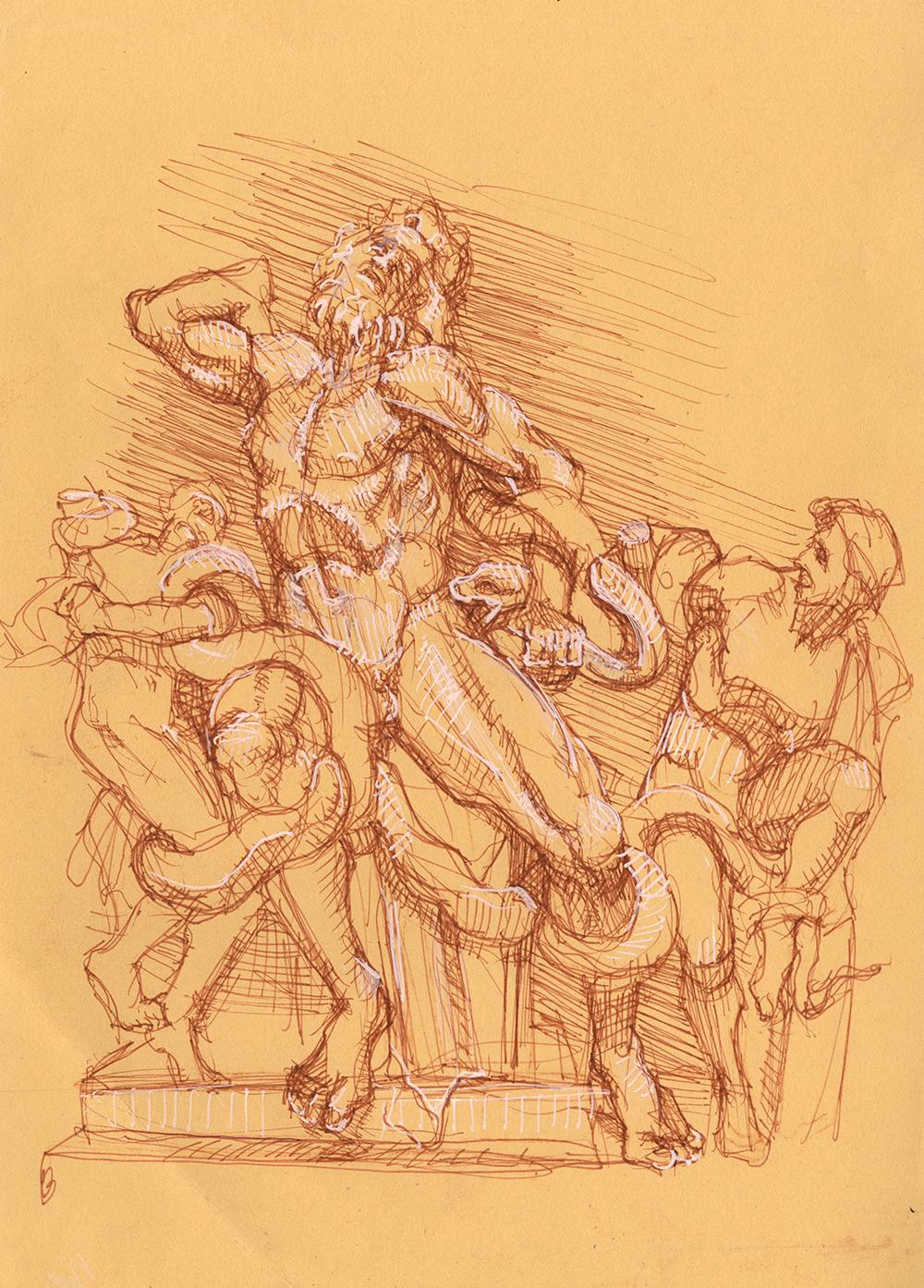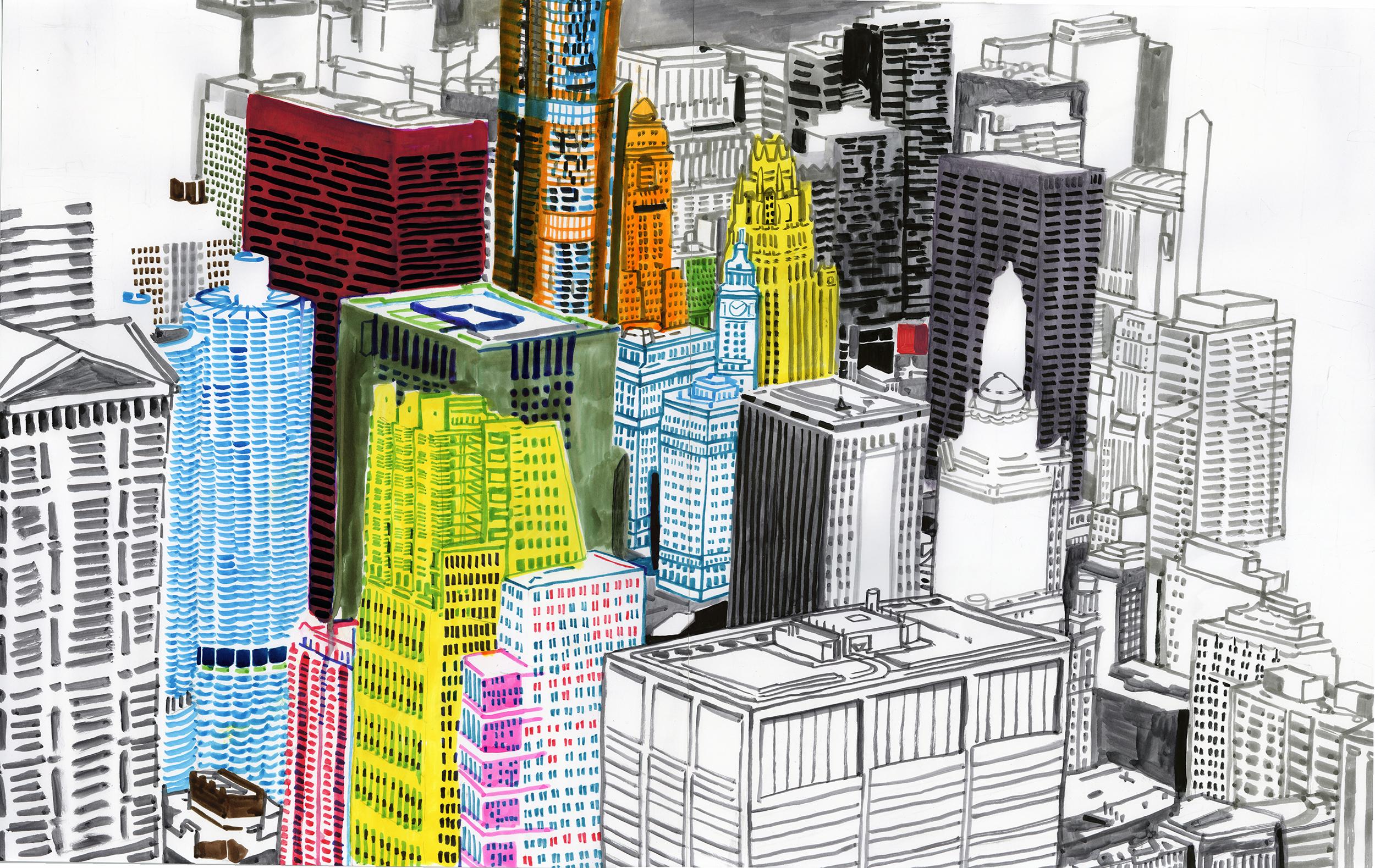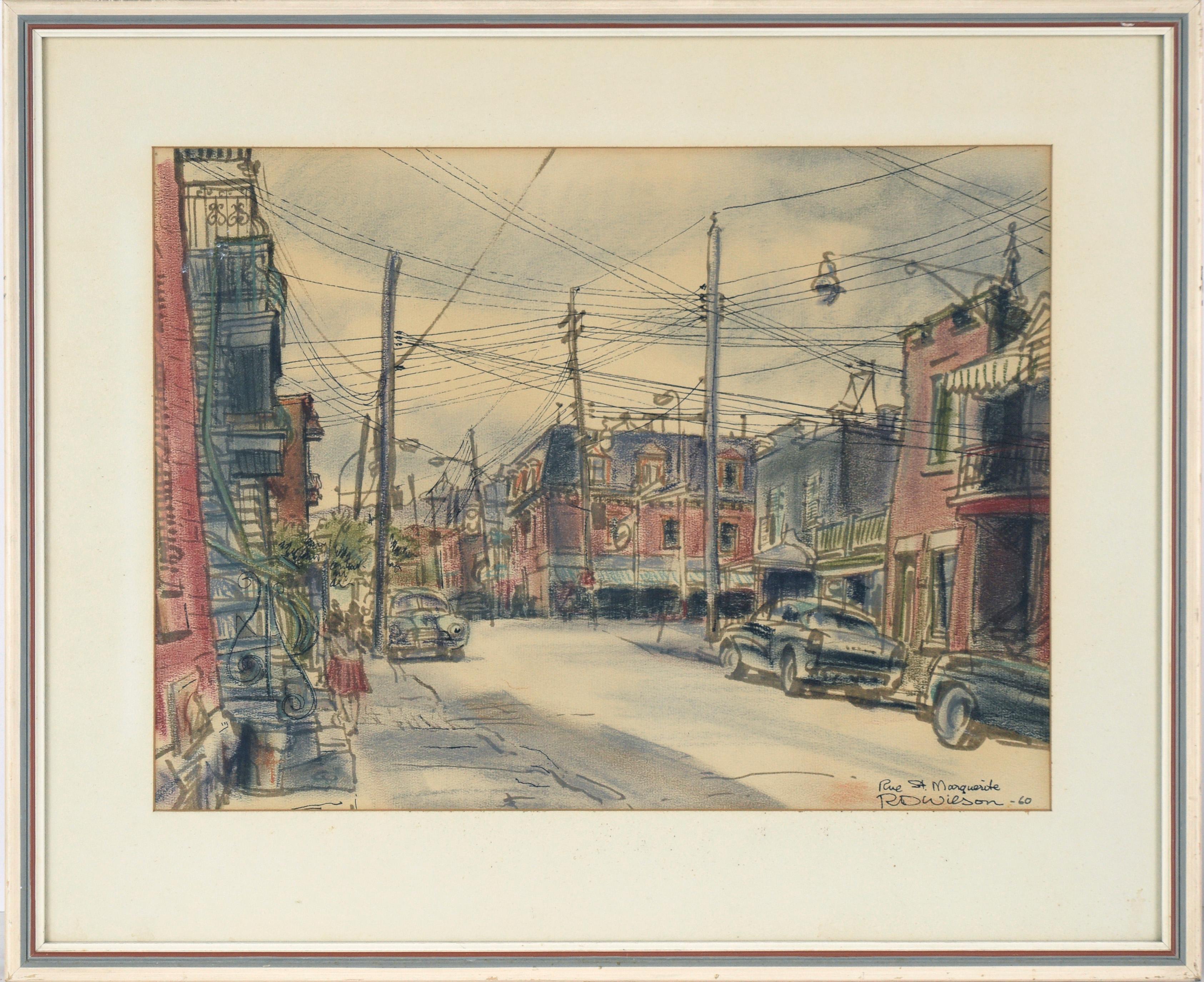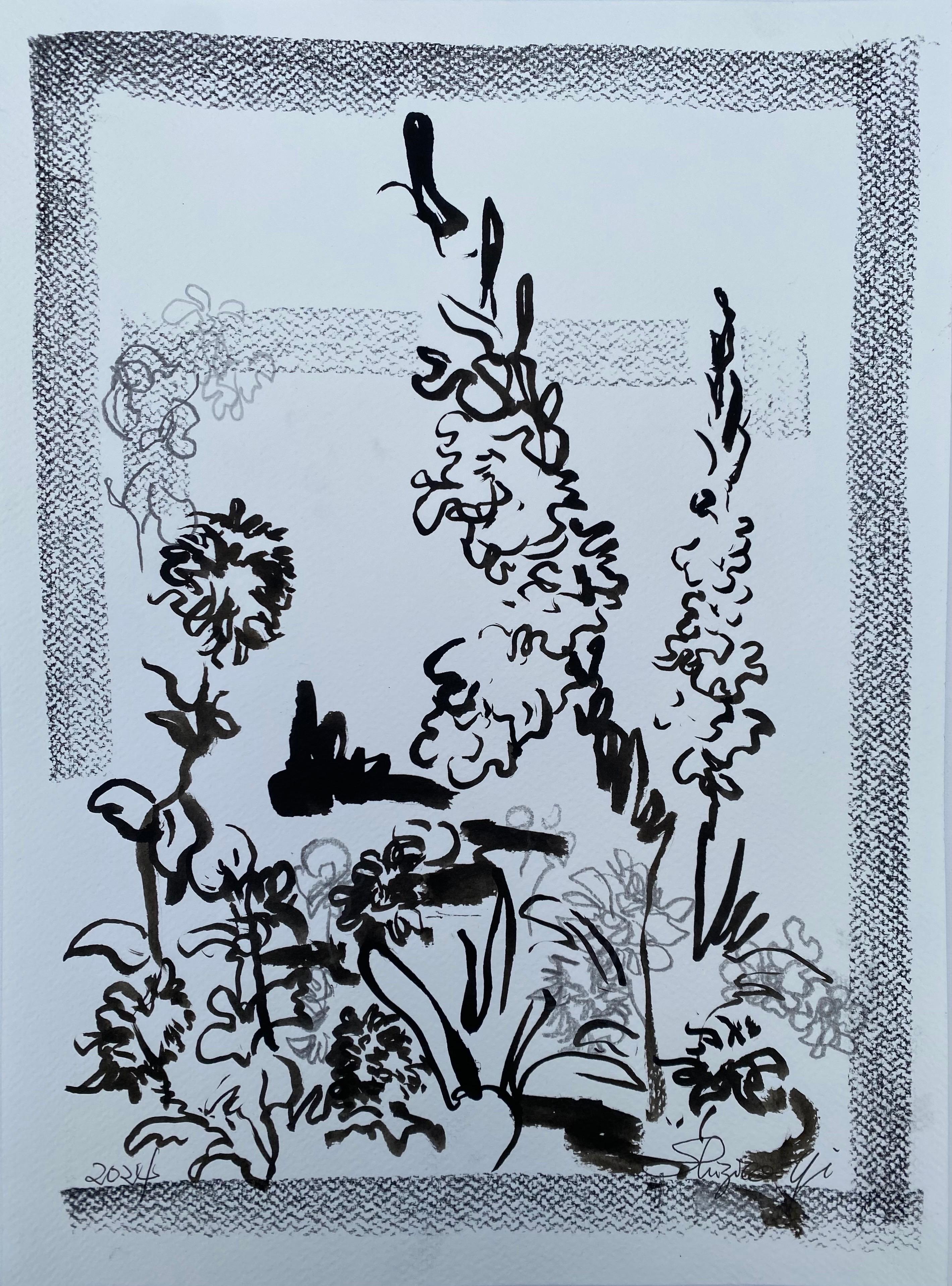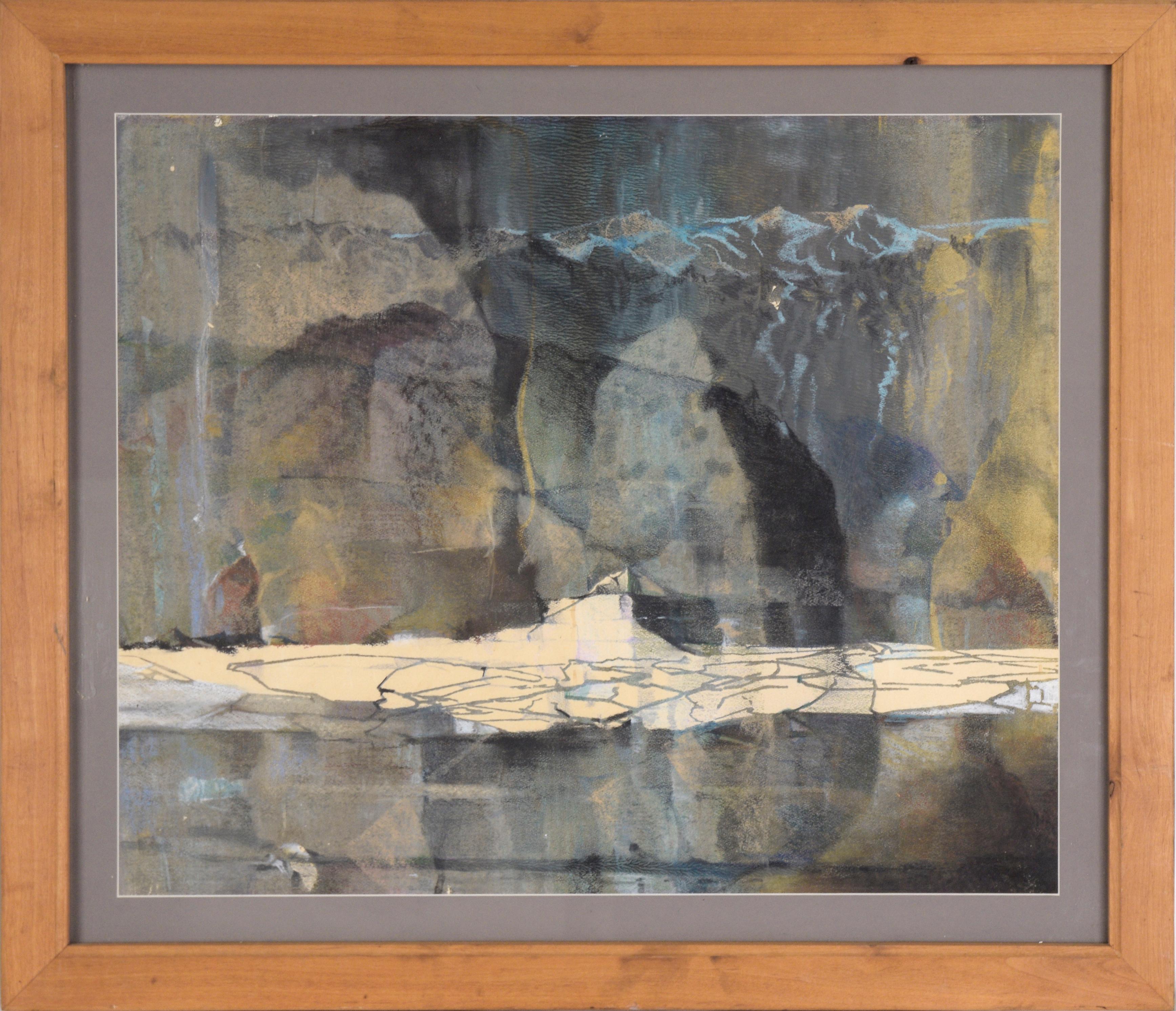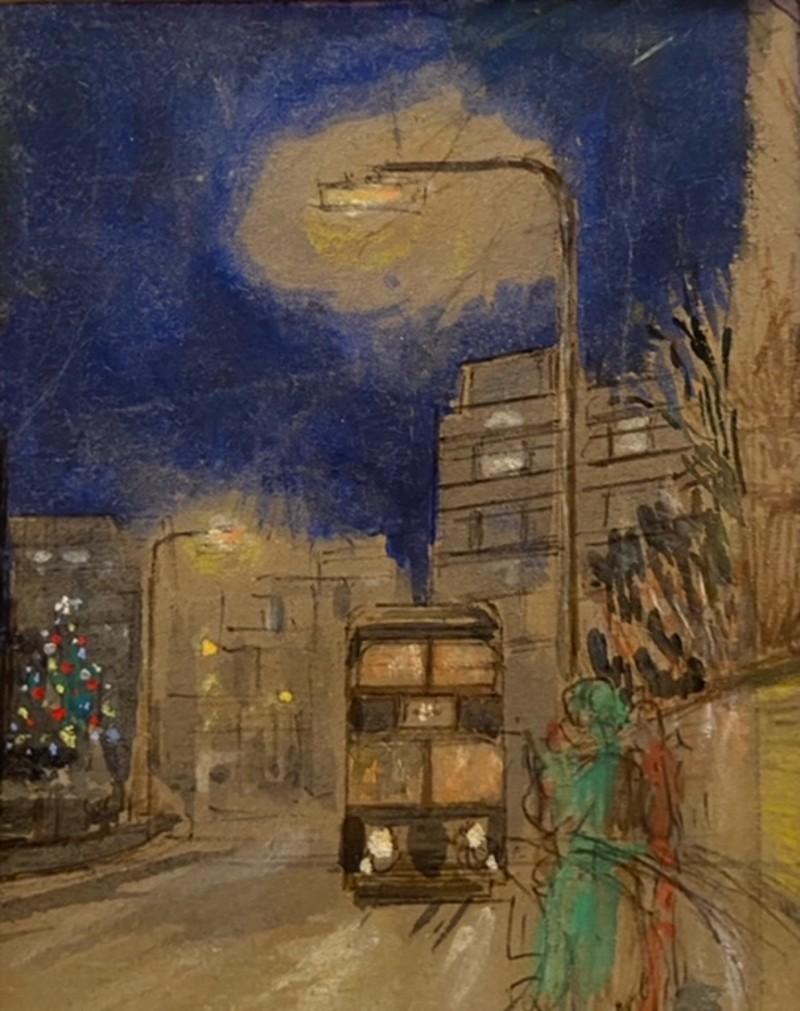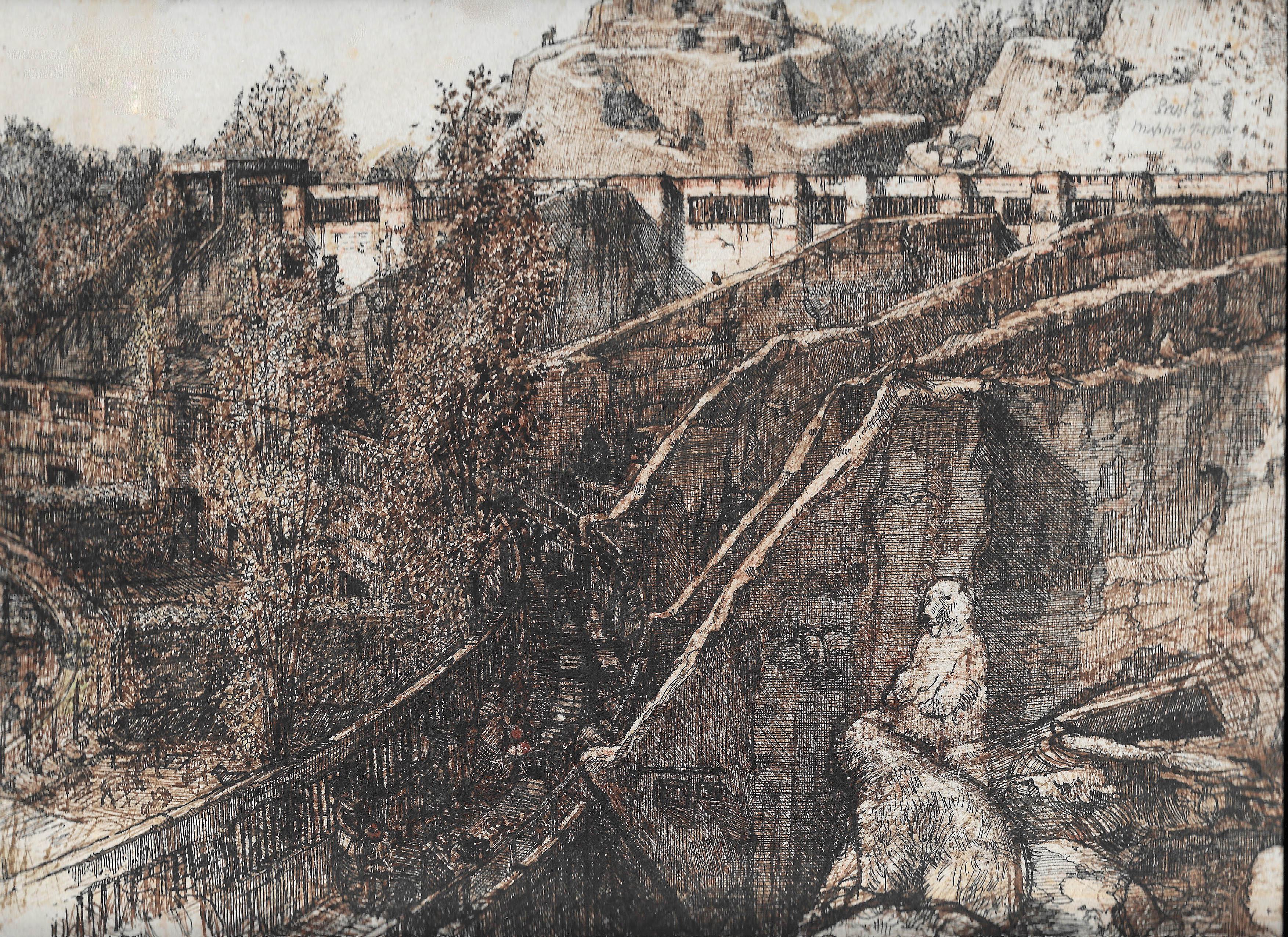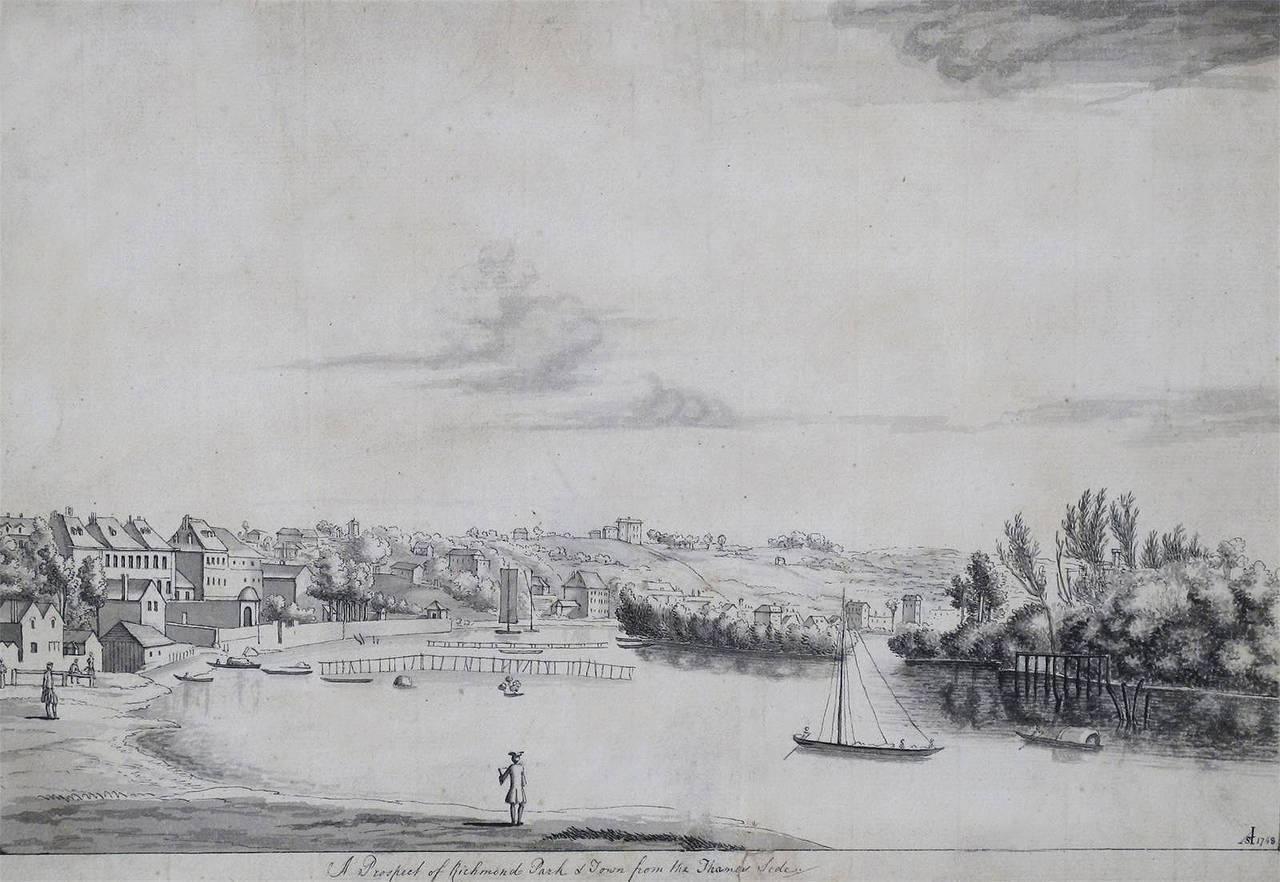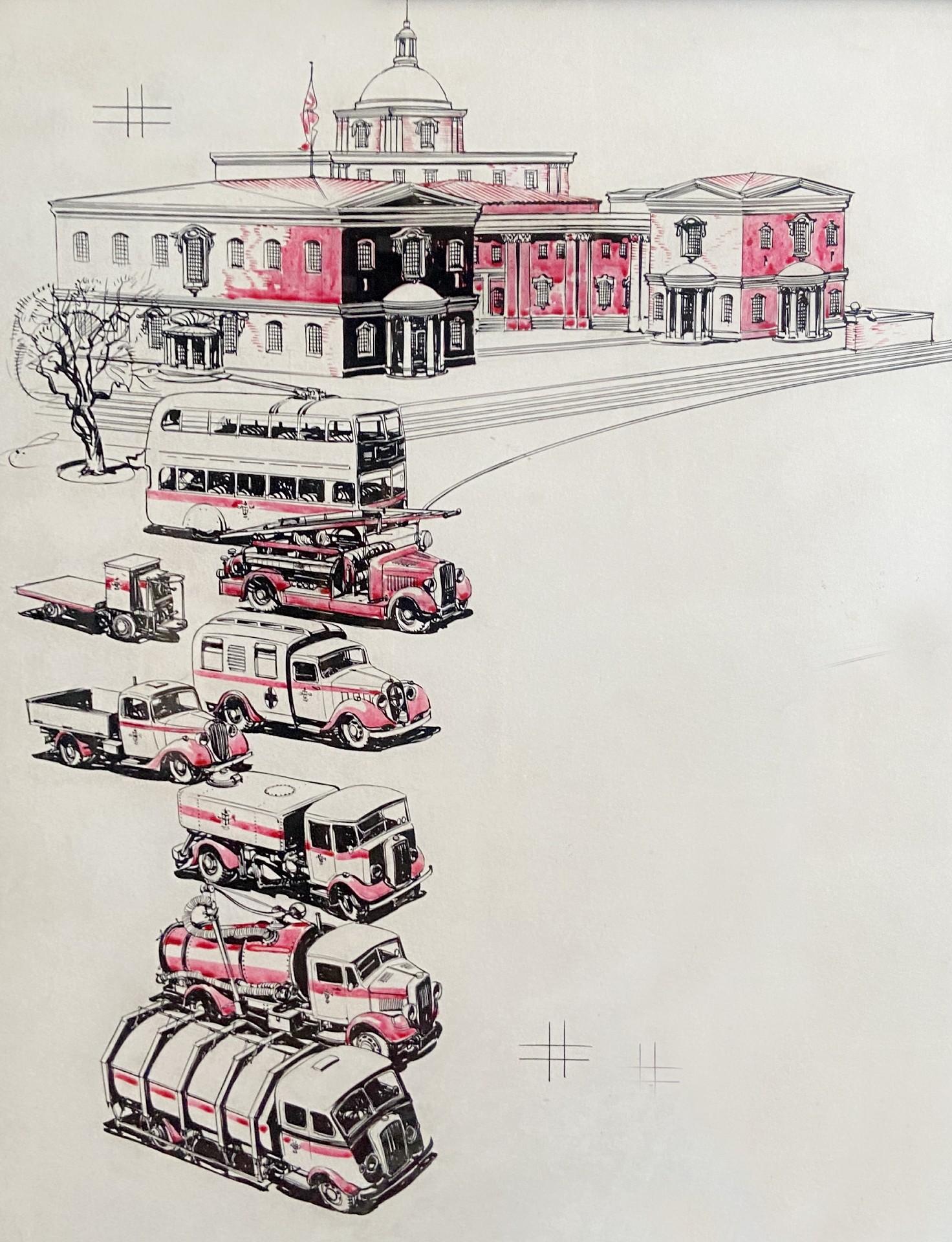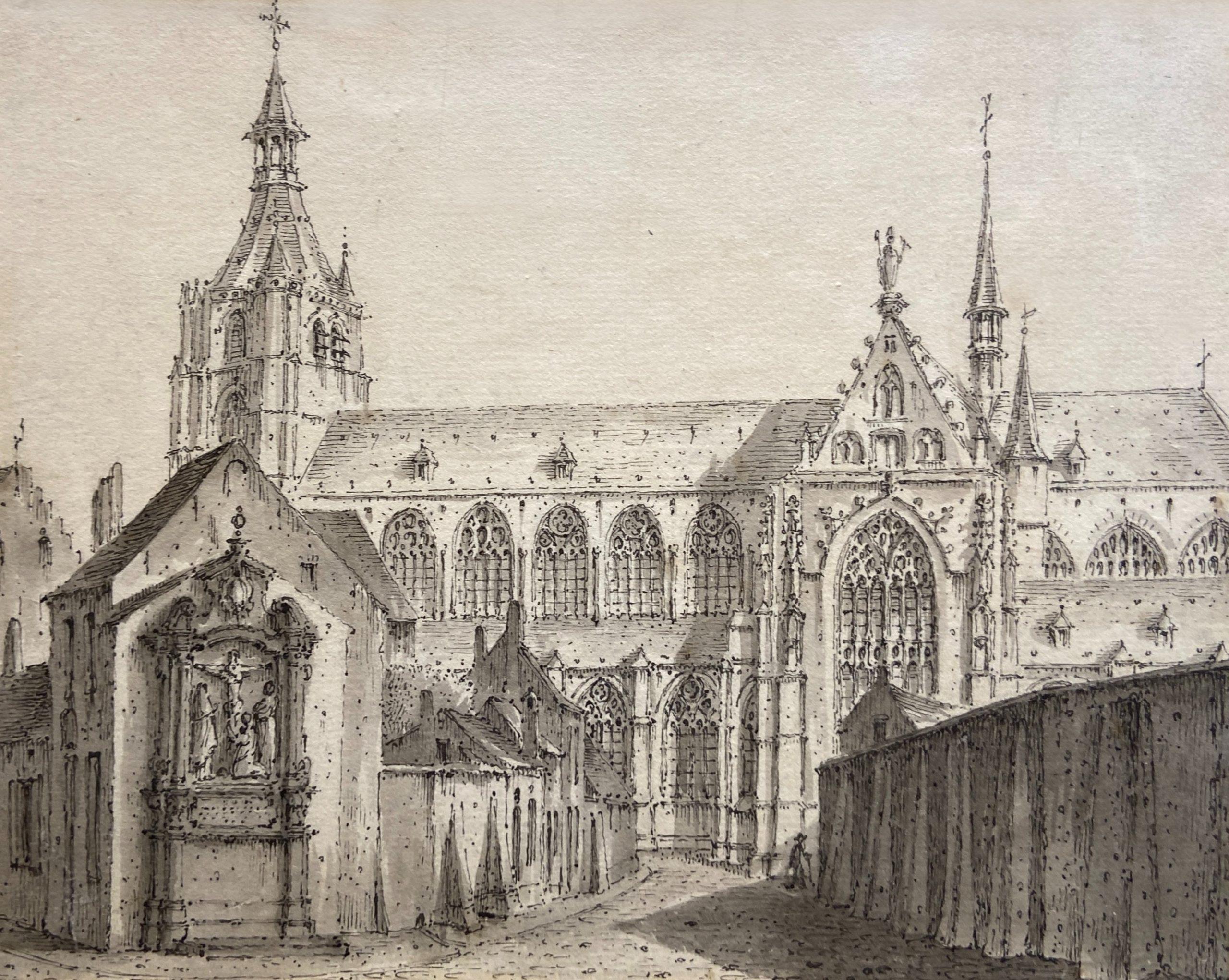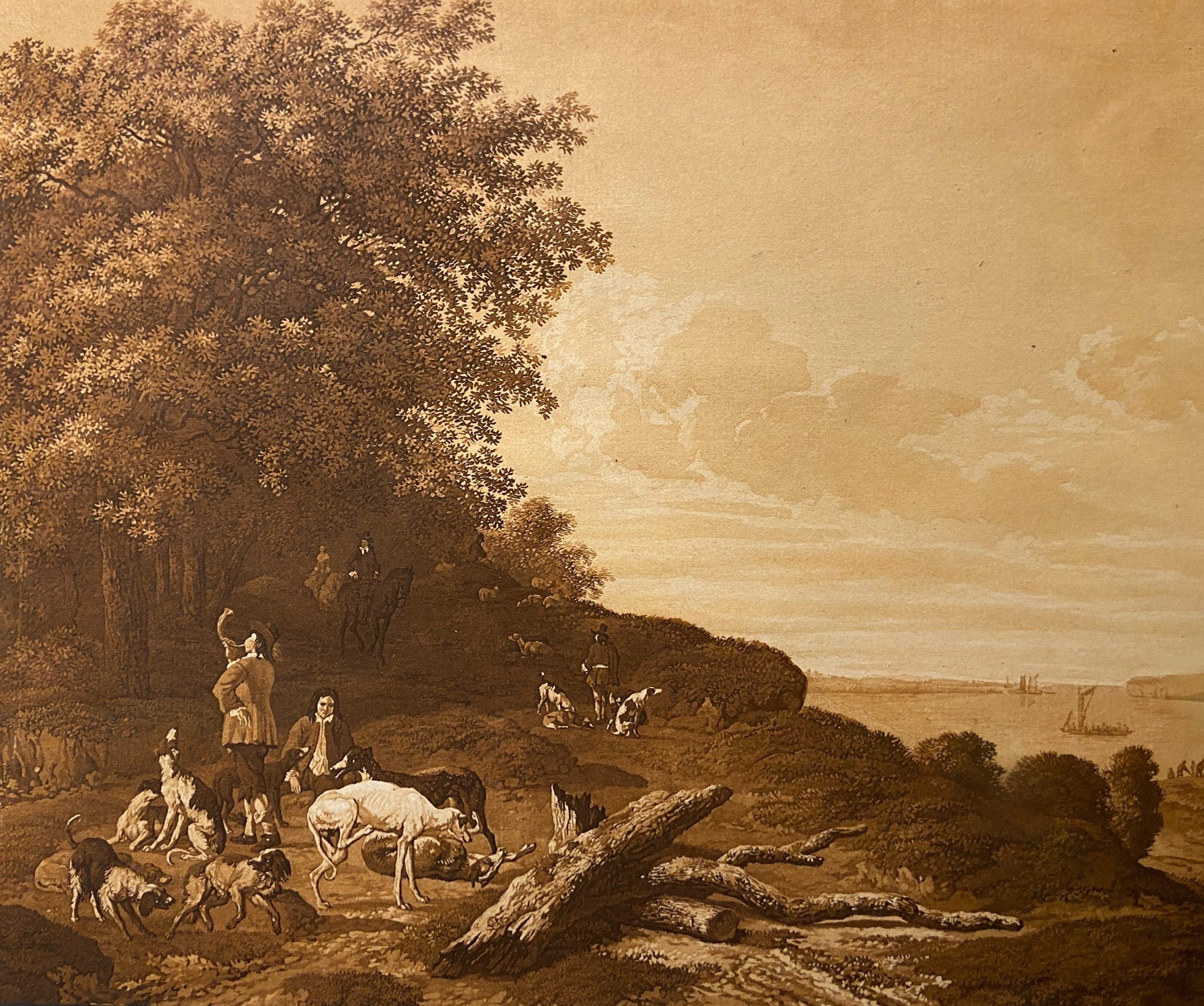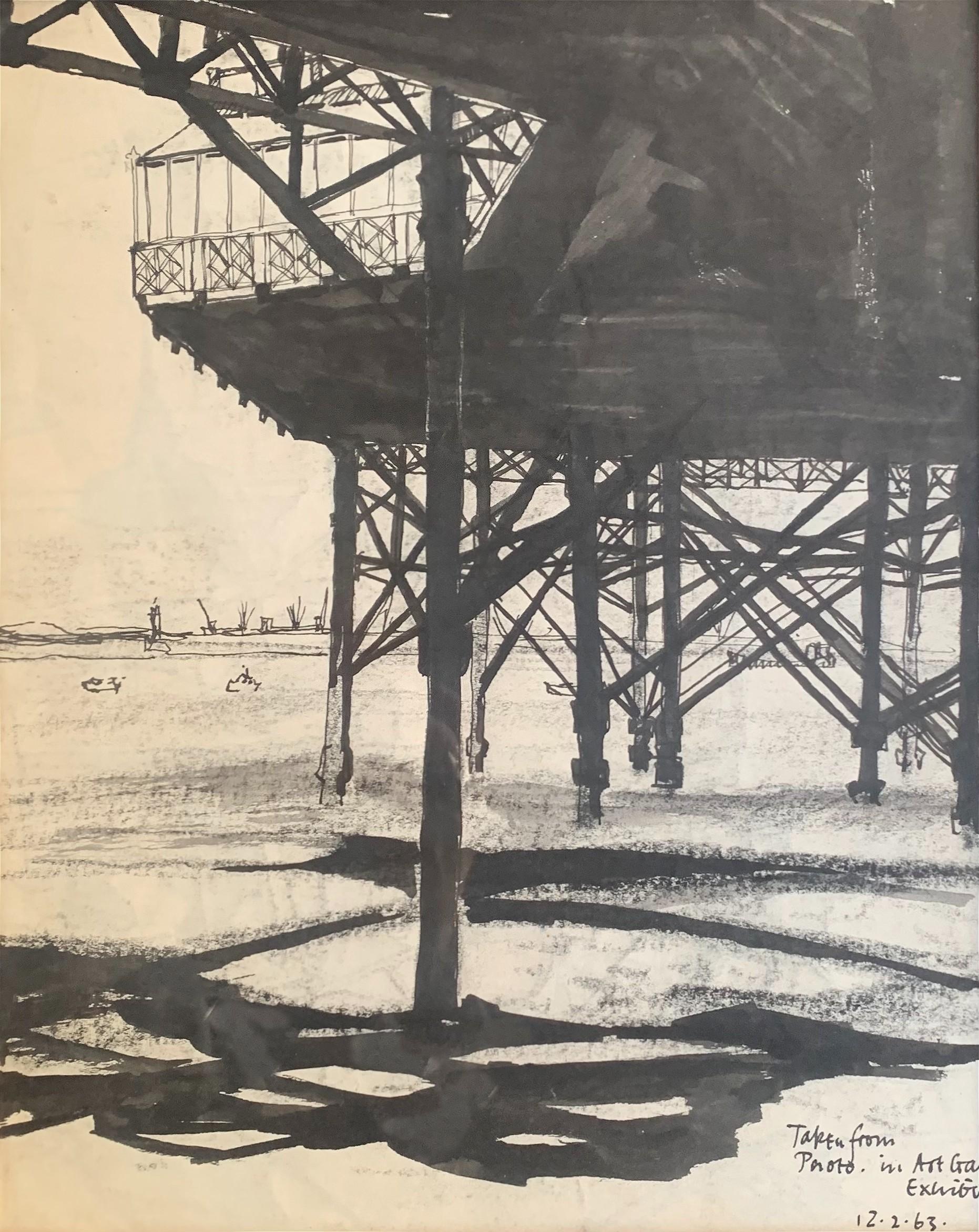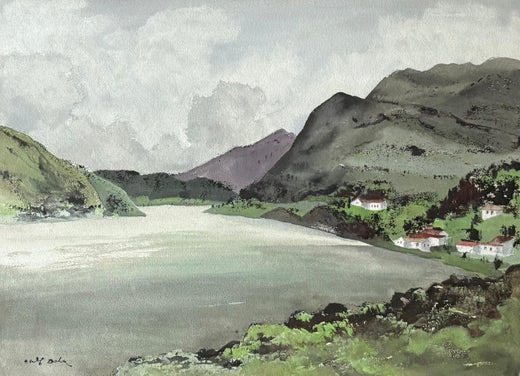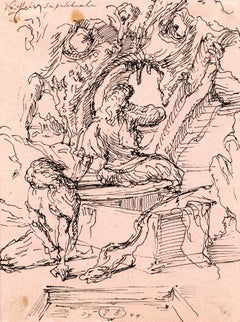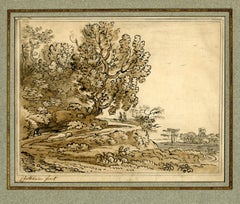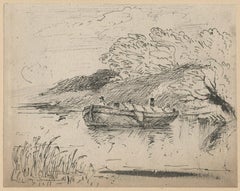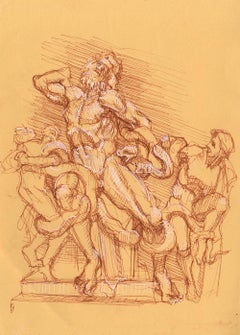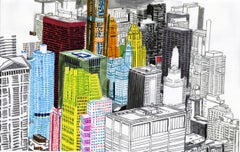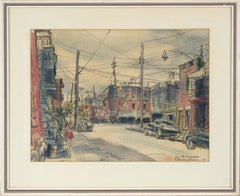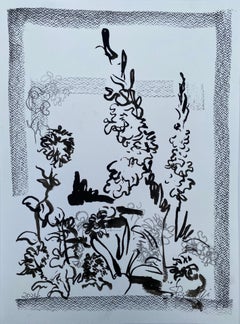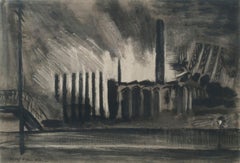
untitled (Chicago Street Scene)
View Similar Items
Want more images or videos?
Request additional images or videos from the seller
1 of 6
Adolf Arthur Dehnuntitled (Chicago Street Scene)1930
1930
About the Item
- Creator:Adolf Arthur Dehn (1895-1968, American)
- Creation Year:1930
- Dimensions:Height: 22.63 in (57.49 cm)Width: 29.5 in (74.93 cm)Depth: 1 in (2.54 cm)
- Medium:
- Period:
- Condition:Very Good original condition. Minor areas of imperfection due to age and medium. Non-obtrusive. Framed archivally.
- Gallery Location:Fairlawn, OH
- Reference Number:Seller: AD00401D1stDibs: LU1404565631
Adolf Arthur Dehn
Adolf Dehn, printmaker, watercolorist, and illustrator, was born in Waterville, Minnesota, in 1895. In 1914 he began studying at the Minneapolis School of Art, and in 1917, the year his first published drawing appeared in the progressive magazine, The Masses, he received a scholarship to study at the Art Students League in New York. There he worked with Kenneth Hayes Miller and was introduced to lithography by Boardman Robinson. While in New York, Dehn threw himself into liberal politics. Declaring himself a conscientious objector in 1918, he was forced to spend four months in a Spartanburg, South Carolina, boot camp for refusing to serve in the armed forces and eight months as a volunteer instructor teaching painting and drawing at a hospital for war victims in Asheville, North Carolina. Dehn spent the years 1920 to 1929 in art-related travel in Europe, primarily in Vienna and in Paris, where he made lithographs at the Atelier Desjobert. Throughout this time, Dehn exhibited his work at the Weyhe Gallery in New York and contributed drawings both to magazines abroad and to the radical journal The Masses. Upon his return to New York in 1929, he became a leading figure in printmaking circles, exhibiting his prints to considerable critical acclaim. In 1937, Dehn had worked exclusively in black and white until 1937—halfway through his career—when he began to work in watercolor. During his summer visits to Minnesota, he created a large body of regional watercolors depicting the lakes and farms of his home state. Lithography and watercolor remained his two primary media, and his subjects ranged from social satire to naturalistic landscapes. He authored the treatise, Water Color Painting, in 1945 and two other instructional books on lithography and watercolor in 1950 and 1955. From 1938 to 1939 he taught at Stephens College in Columbia, Missouri, and during the summers of 1940-1942 he taught at the Colorado Springs Fine Arts Center. In 1939 and 1951 Dehn received Guggenheim Fellowships, and 1961 he was elected Full Academician to the National Academy of Design. Dehn exhibited throughout his career, and his works are in the permanent collections of the Metropolitan Museum of Art, the Museum of Modern Art, the Art Institute of Chicago, the Museum of Fine Arts in Boston, and the British Museum, among others. Adolf Dehn died in New York in 1968.
About the Seller
5.0
Recognized Seller
These prestigious sellers are industry leaders and represent the highest echelon for item quality and design.
Gold Seller
Premium sellers maintaining a 4.3+ rating and 24-hour response times
Established in 1978
1stDibs seller since 2013
788 sales on 1stDibs
Associations
International Fine Print Dealers Association
Authenticity Guarantee
In the unlikely event there’s an issue with an item’s authenticity, contact us within 1 year for a full refund. DetailsMoney-Back Guarantee
If your item is not as described, is damaged in transit, or does not arrive, contact us within 7 days for a full refund. Details24-Hour Cancellation
You have a 24-hour grace period in which to reconsider your purchase, with no questions asked.Vetted Professional Sellers
Our world-class sellers must adhere to strict standards for service and quality, maintaining the integrity of our listings.Price-Match Guarantee
If you find that a seller listed the same item for a lower price elsewhere, we’ll match it.Trusted Global Delivery
Our best-in-class carrier network provides specialized shipping options worldwide, including custom delivery.More From This Seller
View AllVeillee Sepulchrale; Verso: Study of two figures in a landscape
By Eugene Berman
Located in Fairlawn, OH
Veillee Sepulchrale
Verso: Study of two figures in a landscape
Pen and ink on rose colored Canson watermark paper, 1944
Signed in ink with the artist's initials lower center (see photo)
Dated 1944 lower center;
Titled in ink upper left corner (see photo)
Provenance:
Swann Galleries, 2010, realized $900.
John Popplestone (1928-2013), Akron, OH collector, noted psychologist and author
Berman brothers (painters)
From Wikipedia, the free encyclopedia
Jump to navigationJump to search
This article is about the painters. For the American songwriters/producers, see Berman Brothers (producers).
Eugene Berman in Italy in the 1960s
Eugène Berman (Russian: Евгений Густавович Берман; 4 November 1899, Saint Petersburg, Russia – 14 December 1972, Rome) and his brother Leonid Berman...
Category
1940s Surrealist Landscape Drawings and Watercolors
Materials
Ink, Pen
Landscape with Figures in the English Countryside
Located in Fairlawn, OH
Landscape with Figures in the English Countryside
Pen, ink and graphite with gray and brown washes on laid watermarked paper, c. 1740
Signed by the artist lower left of image: "Chate...
Category
1740s Romantic Landscape Drawings and Watercolors
Materials
Ink
Minneapolis
By Adolf Dehn
Located in Fairlawn, OH
Note: Dehn was born in Minnesota. He attended the Minneapolis Institute of Art. This work is a view of the Stone Arch Bridge in Minneapolis with the Pillsbury "A"-Mill in the backg...
Category
1930s American Realist Landscape Drawings and Watercolors
Materials
Ink
The River Barge
By David Cox
Located in Fairlawn, OH
The River Barge
Pen and ink on paper on laid paper, mounted in English drum mount , c. 1810
Unsigned
Condition: Slight sun staining to sheet and mount in the window (see photo)
Image/sheet size: 5 1/4 x 6 11/16 inches
Sight: : 5-3/4 x 7-1/4"
Frame: 13-3/8 x 14-3/8"
Provenance: Colnaghi, London (see photo of label)
David Cox (29 April 1783 – 7 June 1859) was an English landscape painter, one of the most important members of the Birmingham School of landscape artists and an early precursor of Impressionism.
He is considered one of the greatest English landscape painters, and a major figure of the Golden age of English watercolour.
Although most popularly known for his works in watercolour, he also painted over 300 works in oil towards the end of his career, now considered "one of the greatest, but least recognised, achievements of any British painter.
His son, known as David Cox the Younger (1809-1885), was also a successful artist.
Early life in Birmingham, 1783–1804
Cox's birthplace in Deritend, Birmingham, illustrated by Samuel Lines
Cox was born on 29 April 1783 on Heath Mill Lane in Deritend, then an industrial suburb of Birmingham. His father was a blacksmith and whitesmith about whom little is known, except that he supplied components such as bayonets and barrels to the Birmingham gun trade. Cox's mother was the daughter of a farmer and miller from Small Heath to the east of Birmingham. Early biographers record that "she had had a better education than his father, and was a woman of superior intelligence and force of character." Cox was initially expected to follow his father into the metal trade and take over his forge, but his lack of physical strength led his family to seek opportunities for him to develop his interest in art, which is said to have first become apparent when the young Cox started painting paper kites while recovering from a broken leg.
By the late 18th century Birmingham had developed a network of private academies teaching drawing and painting, established to support the needs of the town's manufacturers of luxury metal goods, but also encouraging education in fine art, and nurturing the distinctive tradition of landscape art of the Birmingham School. Cox initially enrolled in the academy of Joseph Barber in Great Charles Street, where fellow students included the artist Charles Barber and the engraver William Radclyffe, both of whom would become important lifelong friends.
At the age of about 15 Cox was apprenticed to the Birmingham painter Albert Fielder, who produced portrait miniatures and paintings for the tops of snuffboxes from his workshop at 10 Parade in the northwest of the town. Early biographers of Cox record that he left his apprenticeship after Fielder's suicide, with one reporting that Cox himself discovered his master's hanging body, but this is probably a myth as Fielder is recorded at his address in Parade as late as 1825. At some time during mid-1800 Cox was given work by William Macready the elder at the Birmingham Theatre, initially as an assistant grinding colours and preparing canvases for the scene painters, but from 1801 painting scenery himself and by 1802 leading his own team of assistants and being credited in plays' publicity.
London, 1804–1814
In 1804 Cox was promised work by the theatre impresario Philip Astley and moved to London, taking lodgings in 16 Bridge Row, Lambeth. Although he was unable to get employment at Astley's Amphitheatre it is likely that he had already decided to try to establish himself as a professional artist, and apart from a few private commissions for painting scenery his focus over the next few years was to be on painting and exhibiting watercolours. While living in London, Cox married his landlord's daughter, Mary Agg and the couple moved to Dulwich in 1808.
David Cox Travellers on a Path, pencil and brown wash.
In 1805 he made his first of many trips to Wales, with Charles Barber, his earliest dated watercolours are from this year. Throughout his lifetime he made numerous sketching tours to the Home Counties, North Wales, Yorkshire, Derbyshire and Devon.
Cox exhibited regularly at the Royal Academy from 1805. His paintings never reached high prices, so he earned his living mainly as a drawing master. His first pupil, Colonel the Hon.H. Windsor (the future Earl of Plymouth) engaged him in 1808, Cox went on to acquire several other aristocratic and titled pupils. He also went on to write several books, including: Ackermanns' New Drawing Book (1809); A Series of Progressive Lessons (1811); Treatise on Landscape Painting (1813); and Progressive Lessons on Landscape (1816). The ninth and last edition of his series Progressive Lessons, was published in 1845.
By 1810 he was elected President of the Associated Artists in Water Colour. In 1812, following the demise of the Associated Artists, he was elected as associate of the Society of Painters in Water Colour (the old Water Colour Society). He was elected a Member of the Society in 1813, and exhibited there every year (except 1815 and 1817) until his death.
Hereford, 1814–1827
In the summer of 1813 Cox was appointed as the drawing master of the Royal Military College in Farnham, Surrey, but he resigned shortly afterwards, finding little sympathy with the atmosphere of a military institution. Soon after that he applied to a newspaper advertisement for a position as drawing master for Miss Crouchers' School for Young Ladies in Hereford and in Autumn 1814 moved to the town with his family. Cox taught at the school in Widemarsh Street until 1819, his substantial salary of £100 per year requiring only two-day's work per week, allowing time for painting and the taking of private pupils.
Cox's reputation as both a painter and a teacher had been building over previous years, as indicated by his election as a member of the Society of Painters in Water Colours and his inclusion in John Hassell's 1813 book Aqua Pictura, which claimed to present works by "all of the most approved water coloured draftsmen". The depression that accompanied the end of the Napoleonic Wars had caused a contraction in the art market, however, and by 1814 Cox had been very short of money, requiring a loan from one of his pupils to pay even for the move to Hereford. Despite its financial advantages and its proximity to the scenery of North Wales and the Wye Valley, the move to Hereford marked a retreat in terms of his career as a painter: he sent few works to the annual exhibition of the Society of Painters in Water Colours during his first years away from London and not until 1823 would he again contribute more than 20 pictures.
Between 1823 and 1826 he had Joseph Murray Ince as a pupil.
London, 1827–1841
He made his first trip to the Continent, to Belgium and the Netherlands in 1826 and subsequently moved to London the following year.
He exhibited for the first time with the Birmingham Society of Artists in 1829, and with the Liverpool Academy in 1831. In 1839, two of Cox's watercolours were bought from the Old Water Colour Society exhibition by the Marquis of Conynha for Queen Victoria.
Birmingham, 1841–1859
Greenfield House in Harborne, Birmingham – where Cox lived from 1841 until his death in 1859 .
In May 1840 Cox wrote to one of his Birmingham friends: "I am making preparations to sketch in oil, and also to paint, and it is my intention to spend most of my time in Birmingham for the purpose of practice". Cox had been considering a return to painting in oils since 1836 and in 1839 had taken lessons in oil painting from William James Müller, to whom he had been introduced by mutual friend George Arthur Fripp. Hostility between the Society of Painters in Water Colours and the Royal Academy made it difficult for an artist to be recognised for work in both watercolour and oil in London, however, and it is likely that Cox would have preferred to explore this new medium in the more supportive environment of his home town. By the early 1840s his income from sales of his watercolours was sufficient to allow him to abandon his work as a drawing master, and in June 1841 he moved with his wife to Greenfield House in Harborne, then a village on Birmingham's south western outskirts. It was this move that would enable the higher levels of freedom and experimentation that were to characterise his later work.
The elderly Cox pictured by Samuel Bellin in 1855.
In Harborne, Cox established a steady routine – working in watercolour in the morning and oils in the afternoon. He would visit London every spring to attend the major exhibitions, followed by one or more sketching excursions, continuing the pattern that he had established in the 1830s. From 1844 these tours evolved into a yearly trip to Betws-y-Coed in North Wales to work outdoors in both oil and watercolour, gradually becoming the focus for an annual summer artists colony that continued until 1856 with Cox as its "presiding genius".
Cox's experience of trying to exhibit his oils in London was short and unsuccessful: in 1842 he made his only submission to the Society of British Artists; one oil painting was exhibited at each of the British Institution and the Royal Academy in 1843; and two oil paintings were exhibited at the Royal Academy in 1844 – the last that would be exhibited in London during his lifetime.
Cox showed regularly at the Birmingham Society of Arts and its successor, the Birmingham Society of Artists, becoming a member in 1842.
Cox suffered a stroke on 12 June 1853 that temporarily paralysed him, and permanently affected his eyesight, memory and coordination.
By 1857 however, his eyesight had deteriorated. An exhibition of his work was arranged in 1858 by the Conversazione Society Hampstead, and in 1859 a retrospective exhibition was held at the German Gallery Bond Street, London. Cox died several months later. He was buried in the churchyard of St Peters, Harborne, Birmingham, under a chestnut tree, alongside his wife Mary.
Work
Early work
In the spring of 1811 Cox made a small number of notable works in oils during a visit to Hastings with his family. It is not known why he didn't continue working in this medium at the time, but the five known surviving examples were described in 1969 as "surely some of the most brilliant examples of the genre in England".
Mature work
Cox reached artistic maturity after his move to Hereford in 1814. Although only two major watercolours can confidently be traced to the period between Cox's arrival in the town and the end of the decade, both of these – Butcher's Row, Hereford of 1815 and Lugg Meadows, near Hereford of 1817 – mark advances on his earlier work.
Later work
Cox's later work produced after his move to Birmingham in 1841 was marked by simplification, abstraction and a stripping down of detail. His art of the period combined the breadth and weight characteristic of the earlier English watercolour school, together with a boldness and freedom of expression comparable to later impressionism. His concern with capturing the fleeting nature of weather, atmosphere and light was similar to that of John Constable, but Cox stood apart from the older painter's focus on capturing material detail, instead employing a high degree of generalisation and a focus on overall effect.
The quest for character over precision in representing nature was an established characteristic of the Birmingham School of landscape artists with which Cox had been associated early in his life, and as early as 1810 Cox's work had been criticised for its "sketchiness of finish" and "cloudy confusion of objects", which were held to betray "the coarseness of scene-painting". During the 1840s and 1850s Cox took this "peculiar manner" to new extremes, incorporating the techniques of the sketch into his finished works to a far greater degree.
Cox's watercolour technique of the 1840s was sufficiently different from his earlier methods to need explanation to his son in 1842, despite the fact that his son had been helping him teach and paint since 1827. The materials used for his later works in watercolour also differed from his earlier periods: he used black chalk instead of graphite pencil as his primary drawing medium, and the rough and absorbent "Scotch" wrapping paper for which he became well-known – both of these were related to his development of a rougher and freer style.
Influence and legacy
By the 1840s Cox, alongside Peter De Wint and Copley Fielding, had become recognised as one of the leading figures of the English landscape watercolour style of the first half of the 19th century. This judgement was complicated by reaction to the rougher and bolder style of Cox's later Birmingham work, which was widely ignored or condemned. While by this time De Wint and Fielding were essentially continuing in a long-established tradition, Cox was creating a new one.
A group of young artists working in Cox's watercolour style emerged well before his death, including William Bennett, David Hall McKewan and Cox's son David Cox Jr. By 1850 Bennett in particular had become recognised as "perhaps the most distinguished among the landscape painters" for his Cox-like vigorous and decisive style. Such early followers concentrated on the example of Cox's more moderate earlier work and steered clear of what were then seen as the excesses of Cox's later years. During a period dominated by sleek and detailed picturesque landscape, however, they were still condemned by publications such as The Spectator as "the 'blottesque' school", and failed to establish themselves as a cohesive movement.
John Ruskin in 1857 condemned the work of the Society of Painters in Water-colours as "a kind of potted art, of an agreeable flavour, suppliable and taxable as a patented commodity", excluding only the late work of Cox, about which he wrote "there is not any other landscape which comes near these works of David Cox in simplicity or seriousness".
An 1881 book, A Biography of David Cox: With Remarks on His Works and Genius, was based on a manuscript by Cox's friend William Hall, edited and expanded by John Thackray Bunce, editor of the Birmingham Daily Post.
There are two Blue Plaque memorials commemorating him at 116 Greenfield Road, Harborne, Birmingham, and at 34 Foxley Road, Kennington, London, SW9, where he lived from 1827. It can also be seen at the David Cox exhibition in Birmingham.
His pupils included Birmingham architectural artist, Allen Edward...
Category
1810s Romantic Landscape Drawings and Watercolors
Materials
Ink
Mountain Landscape
By Hijikata Torei
Located in Fairlawn, OH
Ink and gold on paper silk mounted to hanging scroll
Brush wash scroll
Signed Torei sha, sealed Hirokuni and Torei
Painting size: 42 x 16"
Scrol...
Materials
Sumi Ink
Untitled (Hot Air Baloon Ascent and Spectators)
By Joseph O'Sickey
Located in Fairlawn, OH
Untitled (Hot Air Balloon Ascent and Spectators)
Sepia wash on wove paper, 1985
Signed and dated in ink lower right corner
From the artist's 1985 sketchbook
Probably a view of Cape C...
Category
1980s American Modern Landscape Drawings and Watercolors
Materials
Ink
You May Also Like
Laocoon - Original Ink Drawing - Christopher Ganz
By Christopher Ganz
Located in Chicago, IL
Christopher Ganz
Laocoon
2013
Colored pens
11.75h x 8.50w in
29.84h x 21.59w cm
CG0022
-ARTIST STATEMENT-
I depict my person in multiplicity with different selves representing dramatis
personae. My likeness is both implicit and symbolic in the portrayal of my
narrative; the drama involved in creating art and the artist’s role in society. I
use realism to invite the viewer into mysterious inner worlds that are layered
reflections of the outer. Dehumanizing environments are imbued with art
historical references as a critique of power structures. The artist is an
Everyman who is at odds with society and his self.
Visually my work is a celebration of society’s dark undercurrents and its
overlooked absurdities. I use charcoal and printmaking media as their
tenebrous values add a fitting metaphor. The nuances of light and shadow
seduce viewers into a world their better judgment would have them avoid.
This provokes a sense of disquietude that causes viewers to assess our world
through the austerity of a colorless, yet not humorless, light.
-BIO-
Christopher Ganz grew up in Northeast Ohio and from early on had a fertile imagination and an interest in art. Christopher's artistic education truly began at the University of Missouri, where his love of the human form led to many figure drawing classes and his exposure to the wonders of printmaking. Christopher's then went onto graduate school at Indiana University and a summer abroad program in Italy was a dream realized. Christopher then grasped charcoal with a renewed vigor and large, sfumato-laden drawings ensued. Christopher's artistic influences are many; from a seminal exposure to Dore's engravings of the Divine Comedy, to Rembrandt, Caravaggio, Goya, and up to Lucian Freud, Mark Tansey, and Michael Mazur. Christopher is now an associate professor of printmaking and drawing at Indiana-Purdue University Fort Wayne. Christopher drawings are represented by Ann Nathan Gallery in Chicago, and he shows his prints across the nation.
-CV-
EDUCATION
MFA 2001 Printmaking Indiana University-Bloomington
BFA 1995 Drawing and Printmaking University of Missouri-Columbia
TEACHING/PROFESSIONAL EXPERIENCE
2002-13 Associate Professor, Printmaking and Drawing
Indiana University–Purdue University Fort Wayne (IPFW), Fort Wayne, IN
2002 Adjunct Professor: Lithography (instructor of record)
Indiana University-Bloomington
1998-00 Associate Instructor: Beginning Drawing (instructor of record)
Indiana University-Bloomington
1998 Artist’s Assistant, Assisted Distinguished Professor Emeritus Rudy Pozzatti in
the production of an intaglio edition, Bloomington, IN
SOLO OR SMALL GROUP EXHIBITIONS
2013 Multiplicities: Drawings and Prints by Christopher Ganz, Franklin College, Franklin, IN
Feb. 5 – Feb. 21
2012 Dramatis Personae: Drawings and Prints by Christopher Ganz,
University of South Carolina-Columbia, Jan 16. – Feb. 16, 2012
2011 Christopher Ganz; Prints and Drawing
Hendrix College, Hendrix, Arkansas, March 5 - 18
2009 Fall Season Exhibition, six drawings displayed
Ann Nathan Gallery, Chicago. Oct 16 – Nov. 24
South Bend Museum of Art Biennial 25 - regional juried exhibition for artists in all media,
six large drawings displayed; 14 artists selected from over 200 submissions; May 30-Aug. 23
Juror: William Lieberman, Director of Zolla/Lieberman Gallery, Chicago
2007 Christopher Ganz: Drawings, The Carnegie Visual and Performing Arts Center
Covington, KY, March 9 - April 6
Alter Egos: Drawings and Prints by Christopher Ganz
Trisolini Gallery, Ohio University, Athens, OH, Jan. 9 - Feb.17
2005 The Two-Way Mirror: Self - Portraits by Christopher Ganz
Fort Wayne Museum of Art, Fort Wayne, IN, Aug.20 - Oct. 23
2004 Works on Paper: Christopher Ganz and Paul Schumann
Robert E. Wilson Gallery, Huntington College, Huntington, IN, Sept. 2 - 25
2002 Images by Christopher Ganz - Visual Arts Gallery
Indiana University-Purdue University Fort Wayne, Fort Wayne, IN, Sept. 3 – Oct. 11
2001 M.F.A. Thesis Exhibition - School of Fine Arts Gallery
Indiana University, Bloomington, IN, March 27 - April 7
SELECTED ADJUDICATED OR INVITATIONAL GROUP EXHIBITIONS
2012
International Expositions of Sculpture Objects and Functional Art (SOFA) Chicago, Drawing,
“The Initiation” on display in Ann Nathan Gallery space, Nov. 2-4
Reverse Watching, Invitational Print Portfolio
Monoprint, “The Mind’s Eye" displayed at Mid America Print Council’s National
Conference, Southeast Missouri State, Cape Girardeau, MO, Nov. 1 – 3
Contemporary American Realism: Fort Wayne Museum of Art 2012 National
Biennial, Fort Wayne, IN, Aug.11-Oct. 28
32nd Annual National Print Exhibition at Artlink - National Juried Exhibition
Artlink Gallery, Fort Wayne, IN, April 13 – May 23
Juror: Ladislav Hanka, internationally exhibiting printmaker
International Expositions of Sculpture Objects and Functional Art (SOFA) New York, Park
Avenue Armory, Drawing, “The Enigma” on display in Ann Nathan Gallery space, April
20-23
Spring Group Show, drawings, “Checking Out” and “The Enigma” displayed, April – May 2
Ann Nathan Gallery, Chicago
2011
Prints U.S.A. 2011 – National Juried Exhibition
Springfield Art Museum, Missouri, Nov. 18 – Jan. 8
Juror: Elizabeth Wyckoff, Curator of Prints, Drawings & Photographs, St. Louis Art Museum
International expositions of Sculpture Objects and Functional Art (SOFA) New York,
Park Avenue Armory, Drawing, Checking Out on display in Ann Nathan Gallery
space, April 14-17
2010
Contemporary American Realism: Fort Wayne Museum of Art 2010 National
Biennial, Fort Wayne, IN, Sept. 3 – Nov. 7; two pieces accepted
Cultural Baggage, Invitational Print Portfolio
Intaglio print, Super-Heroes go to Hell, after Dore’ displayed at Mid America Print
Council’s National Conference, University of Minnesota Minneapolis, MN, Chicago, Oct.
13-16
Art Chicago: International Fair of Contemporary and Modern Art
Drawing, The Cyclops on display in Ann Nathan Gallery space, April 29 - May 2
30th Annual National Print Exhibition at Artlink - National Juried Exhibition
Artlink Gallery, Fort Wayne, IN, April 16 – May 26
Juror: Claudia Berlinski, Senior Lecturer of Printmaking at Akron University, Akron, OH
2009
Are you looking at me? Invitational Print Portfolio
Color lithograph, Open and Shut, displayed at IMPACT 6: International Print Conference
Centre for Fine Print Research, University of the West of England, Bristol, Sept. 16 – 19
Art Chicago: International Fair of Contemporary and Modern Art
Drawing, Self-Checkout on display in Ann Nathan Gallery space, May 1 – 4
Identification Please, Invitational Print Portfolio
Intaglio print, Good Cop/Bad Cop displayed at Southern Graphics Council National
Conference, Columbia College, Chicago, March 25 – 29
Boston Printmakers 2009 North American Print Biennial – National juried
printmaking exhibition
Juror: Rebecca Waddell, Curator of Prints at the New York Public Library
Boston University’s 808 Gallery, Boston, MA, Feb. 15 – March 30
22nd Parkside National Small Print Exhibition - National Juried Exhibition
University of Wisconsin-Parkside, Kenosha, WI, Jan.18 - Feb. 19
Juror: Professor of printmaking at the University of Wisconsin - Parkside
Portraits and Beyond, Ann Nathan Galley, Chicago, IL, Jan. 9 - Feb 19 2008 Contemporary American Realism: Fort Wayne Museum of Art 2008 National
Biennial, Fort Wayne, IN, Sept13 – Nov. 2; two pieces accepted
28th Annual National Print Exhibition at Artlink - National Juried Exhibition
2008
Artlink Gallery, Fort Wayne, IN, April 11 – May 21
Juror: Mark Pascale, Printmaking Faculty, School of the Art Institute of Chicago and
Curator of Prints and Drawing, Art Institute of Chicago
“No Danger” - Invitational Portfolio
Folded paper airplane lithograph, “The Dream of Flight” displayed at Richmond
International Airport as part of the Southern Graphics Council National Conference
Virginia Commonwealth University, Richmond, VA, March 26 – April 26
21st Parkside National Small Print Exhibition - National Juried Exhibition
University of Wisconsin-Parkside, Kenosha, WI, Jan.20 - Feb. 21
Juror: Karla Hackenmiller, Printmaking Chair and Associate Professor, School of Fine
Arts, Ohio University
2007
Singularities – Invitational group exhibit
Joan Resnikoff Gallery, Roxbury Community College, Boston, MA
Nov. 2 – Dec. 17
Hong Kong Graphics Art Festival 2007: Crossing Boundaries - Invitational
international printmaking exchange exhibition
School of Design Gallery, Hong Kong Polytechnic University, Kowloon, Hong Kong,
China, Nov. 1 – Nov. 16
27th Annual National Print Exhibition at Artlink - National Juried Exhibition
Artlink Gallery, Fort Wayne, IN, May 26 - July 5; two pieces accepted
Award Selector: Brett Colley, Assistant Professor of Art and Design, Grand Valley
State University
Boston Printmakers 2007 North American Print Biennial – National juried
printmaking exhibition
Boston University’s 808 Gallery, Boston, MA, Feb. 18 - April 1
Juror: Judith B. Hecker, Assistant Curator, Department of Prints and Illustrated Books,
The Museum of Modern Art, New York
2006
The Printed Image: The First Biennial Midwestern Graphics Juried Exhibition
National Juried Printmaking Exhibition
Alice C. Sabatini Gallery, Topeka & Shawnee County Public Library, Topeka, KS
Aug. 11 - Sept 15
Juror: Karen Kunc, Professor of Printmaking/Book Arts, University of Nebraska- Lincoln
2006 National Contemporary American Realism: Fort Wayne Museum of Art's 2006
Biennial, Fort Wayne, IN, June 10 - Aug. 20; two pieces accepted
26th Annual National Print Exhibition at Artlink - National Juried Exhibition
Artlink Gallery, Fort Wayne, IN, May 26 - July 5; two pieces accepted
Award Selector: Carolyn Autry, artist and Associate Professor of Art and Art History
at the University of Toledo
19th University of Dallas Print Invitational - Traveling national invitational exhibition
Haggerty Gallery, University of Dallas, Irving TX, Jan. 28 – March 6 three pieces accepted
Texas A&M University – Corpus Christi, TX, Feb. 1 – March 9, 2007
Juror: Juergen Strunck, Professor of Art, University of Dallas
A Mammalian Future? - Invitational Portfolio
Intaglio print Jonas Ark displayed at Southern Graphics Council National Conference
University of Wisconsin-Madison, University of Wisconsin-Madison, April 5 – 9
Paper in Particular - National Juried works on paper exhibition
Larson Gallery, Columbia College, Columbia, MO, Feb. 5 - March 5; two pieces
accepted. Juror: David Morrison, Professor of Printmaking, Herron School of Art and
Design, Indianapolis, IN
19th Parkside National SmallPrint Exhibition - National Juried Exhibition
University of Wisconsin-Parkside, Kenosha, WI, Jan.15 - Feb. 16
Juror: Rudy Pozzatti, Professor Emeritus, Indiana University - Bloomington
2005
18th Parkside National Small Print Exhibition - National Juried Exhibition
University of Wisconsin-Parkside, Kenosha, WI, Jan.14 - Feb. 22
Juror: Karen Kunc, Professor of Printmaking/Book Arts, University of Nebraska-Lincoln
2004
Exchange! A Survey of International and National Exchange Print Portfolios
Visual and Performing Arts Center, Main Gallery, Purdue University, Feb. 1 - 15
Juror: Kathryn Reeves, P rofessor of Art, Purdue University
2003
23rd Annual National Print Exhibition at Artlink - National Juried Exhibition
Artlink Gallery, Fort Wayne, IN, May 16 - July 2, 2003
Border to Border – National Juried Drawing Exhibition
Trahern Gallery, Austin Peay State University, Clarksville, TN, March 3 - 30
Juror: Jim Cantrell, independent studio artist, Bardstown, KY
On/Of Paper – National Juried Exhibition
Clyde Snook Gallery, Adams State College, Alamosa, CO, March 3 - April 11
Juror: Dale Leys, Professor of Drawing, Murray State University, Murray, KY
Emerging Artists 2003 – National Juried Exhibition
Limner Gallery, New York, NY, Feb.12 – March 1
Jurors: Tim Slowinski...
Category
21st Century and Contemporary Contemporary Landscape Drawings and Waterc...
Materials
Paper, Ink
Cityscape - Stylized Birds Eye View of Chicago, Original Work on Paper, Framed
Located in Chicago, IL
Patrick Vale
Cityscape
acrylic and ink on paper
24h x 38w in
60.96h x 96.52w cm
Framed:
28.50h x 42.50w x 2.25d in
72.39h x 107.95w x 5.71d cm
PKV020
Se...
Category
2010s Modern Landscape Drawings and Watercolors
Materials
Ink, Acrylic, Archival Paper
"Rue St. Marguerite" Montreal Street in Watercolor, Colored Pencil and India Ink
Located in Soquel, CA
"Rue St. Marguerite" Montreal Street Scene in Watercolor, Pastel, and India Ink
Vibrant drawing of Montreal, Canada, by Richard D. Wilson (Canadian, 1920-1994). A street scene of 1960s Montreal, complete with cars, people walking and crisscrossing telephone and power lines...
Category
1960s Impressionist Landscape Drawings and Watercolors
Materials
Pastel, India Ink, Watercolor, Paper
Original-Drawing Time-Dahlias&Gladiolus PleinAir-Brit Awarded Artist-ink onPaper
Located in London, GB
The Summer Bloom Series is an ongoing project that Shizico Yi returns to each summer, painting en plein air in her garden. She began gardening in 2015 to create a healing space for h...
Category
2010s Abstract Expressionist Abstract Drawings and Watercolors
Materials
Charcoal, Ink, Graphite, Gouache
"Frozen Lake" Abstracted Landscape
Located in Soquel, CA
Evocative abstract landscape by Martin Kallman (American, 1925-1992). This piece has large sections of light and shadow that overlap each other, as if c...
Category
1980s Contemporary Landscape Drawings and Watercolors
Materials
Paper, Crayon, Ink, Monotype
$700 Sale Price
20% Off
Christmas in the City 20th Century Pastel & Watercolour London Scene
Located in London, GB
English School
Early 20th Century
Pastel, ink and watercolour on paper
4 1/2 x 3 3/4 inches (11.5 x 9.5 cm)
Acid free mount and contemporary frame
Category
Early 20th Century Landscape Drawings and Watercolors
Materials
Pastel, Ink, Watercolor
